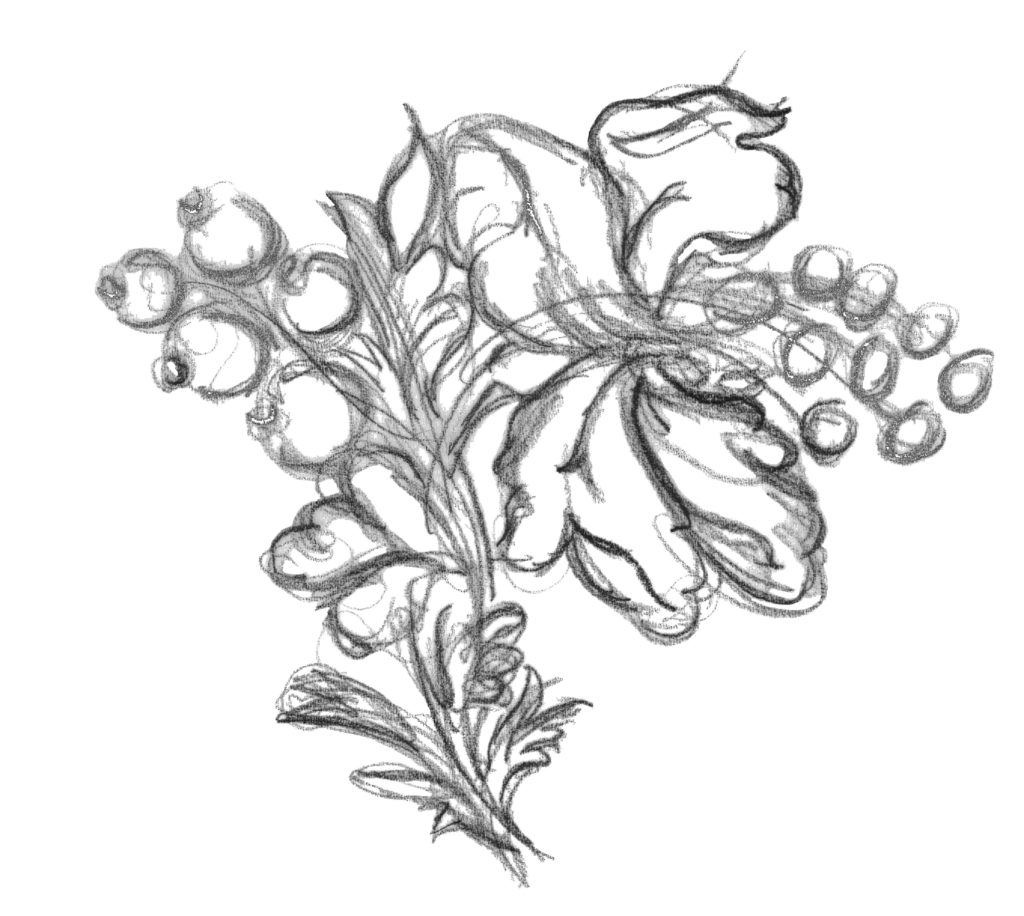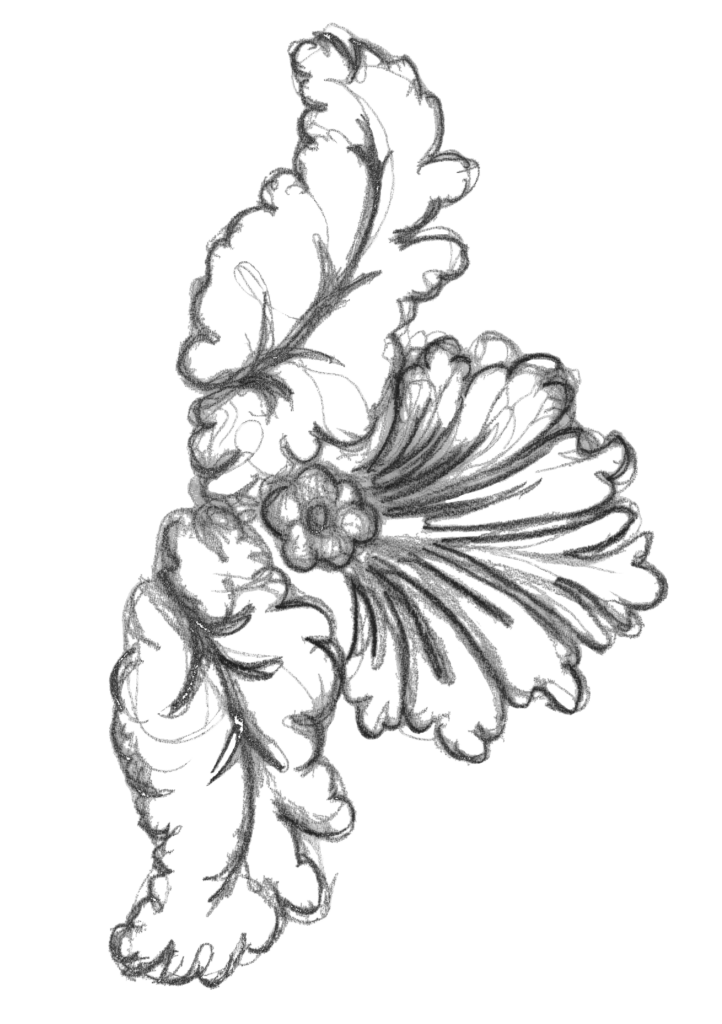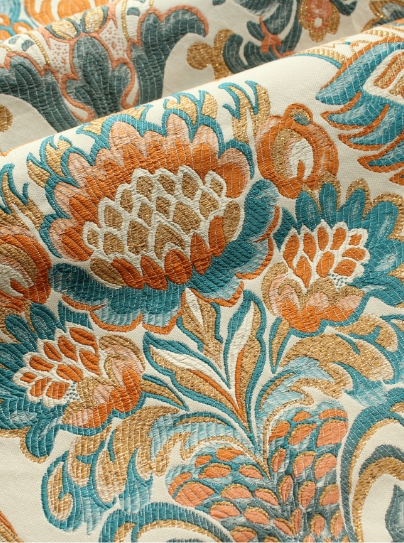Step inside Spencer House, one of London’s finest Neoclassical townhouses. From the grandeur of the Great Room to the intimacy of Lady Spencer’s Room, discover how Humphries Weaving’s historic silk damasks continue to enrich its remarkable interiors.
Recently, our Account Manager, Sarah, had the pleasure of taking a tour around the stunning Spencer House. Open to the public on Sundays only, it is worth the trip, especially to see this stunning house in person. Biased as we may be, the highlight is surely the wonderful silk that Humphries Weaving had the pleasure to produce back in the 1990’s having worked closely with renowned interior designer David Mlinaric on the project. The attention to detail was second to none.
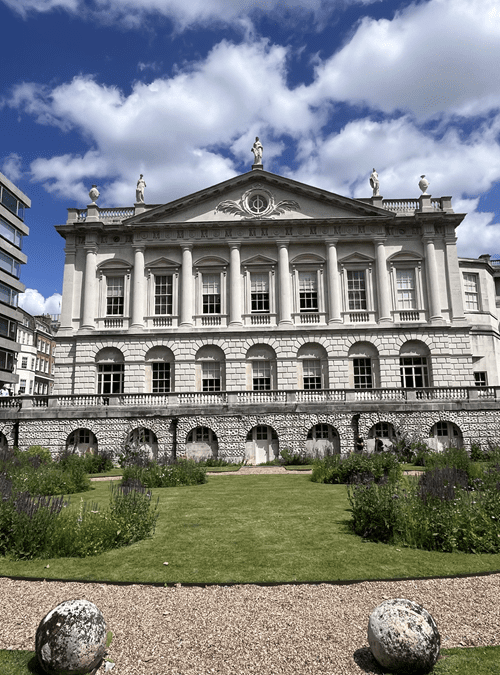


The Great Room
Designed as a spectacular setting for receptions, balls, and as a picture gallery, the Great Room embodies the grandeur of Spencer House. Its walls, festoon curtains and upholstery are dressed in our New Pavia silk damask, custom-woven in Spencer Red – a deep crimson, dyed specially in both warp and weft. Originally redrawn from an early 18th-century French document, the design is also seen at Holkham Hall and Castletown Cox. The richly symbolic ceiling depicts the Spencer Griffin, Bacchus, Apollo, Venus and other classical figures, representing hospitality, the arts, love and beauty
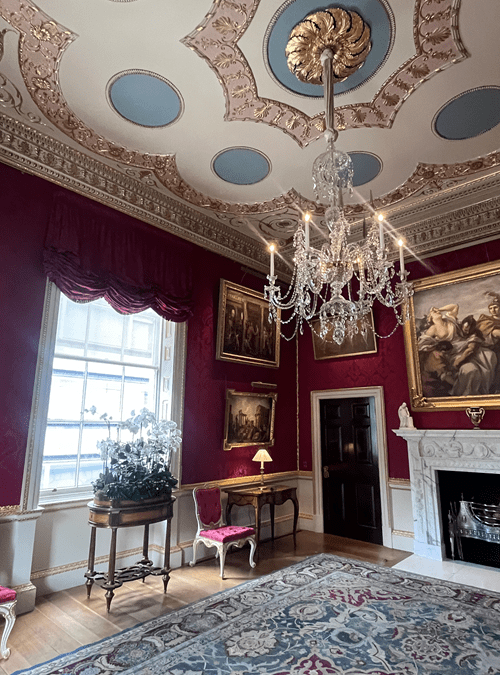
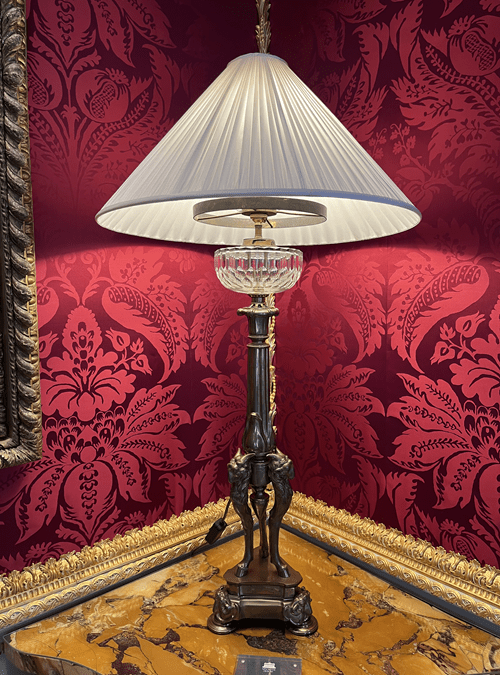
Lady Spencer’s Room
A more intimate space, Lady Spencer’s private drawing room also features our New Pavia silk in crimson, reproduced from an original 21” wide fragment. Here, Georgiana Spencer would receive guests and display her collection in surroundings that combined elegance with personal charm. Stuart designed the ceiling after the Baths of Augustus in Rome, adapting its square plan for the rectangular room.
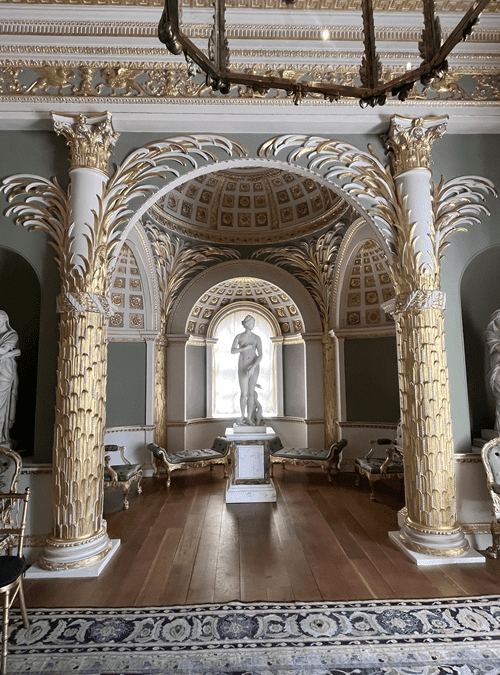
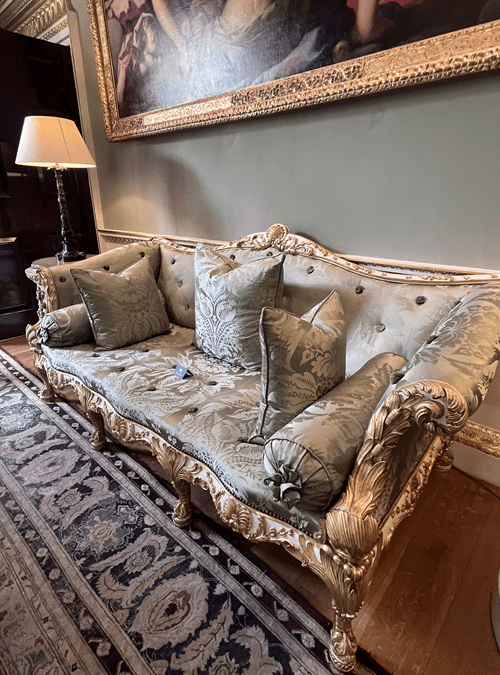
The Palm Room
The Palm Room is the architectural climax of Vardy’s ground floor suite, inspired by John Webb’s fantastical design for Charles II’s bedchamber at Greenwich Palace. Carved and gilded palm trees rise dramatically, symbolising fertility and the harmony of nature and architecture. In the 1990s, replicas of Vardy’s suite of furniture were upholstered in our New Pavia silk in a light sage green, woven in multiple commissions to dress both upholstery and curtains.
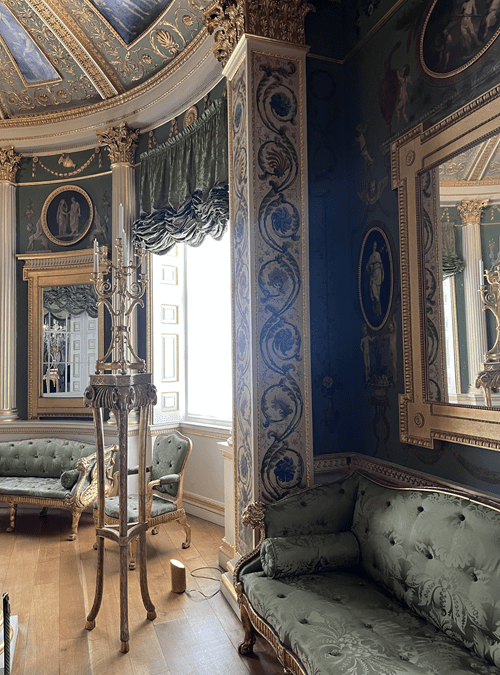
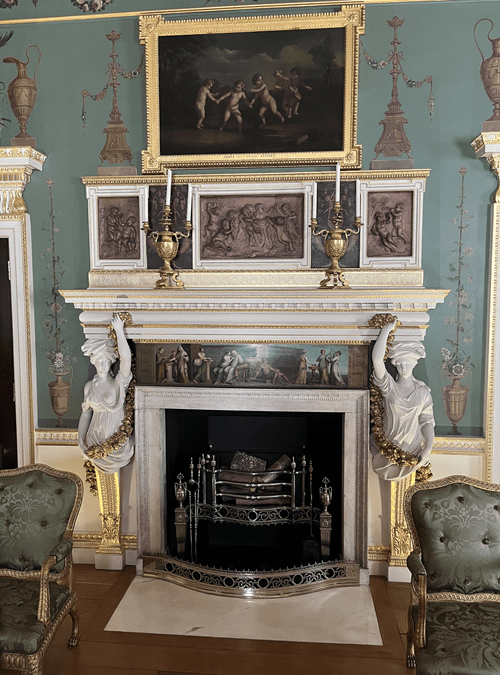
The Painted Room
Unexpected in its delicacy, the Painted Room is one of the earliest neoclassical interiors in Europe. Intended as a space of retreat from the festivities of the Great Room, its decoration symbolises the love between Lord and Lady Spencer. A set of giltwood chairs and sofas, designed by James Stuart and featuring our New Pavia in sage green, are especially significant examples of early English neoclassical furniture. The silk was dyed to match original green fibres still attached to the historic frames.
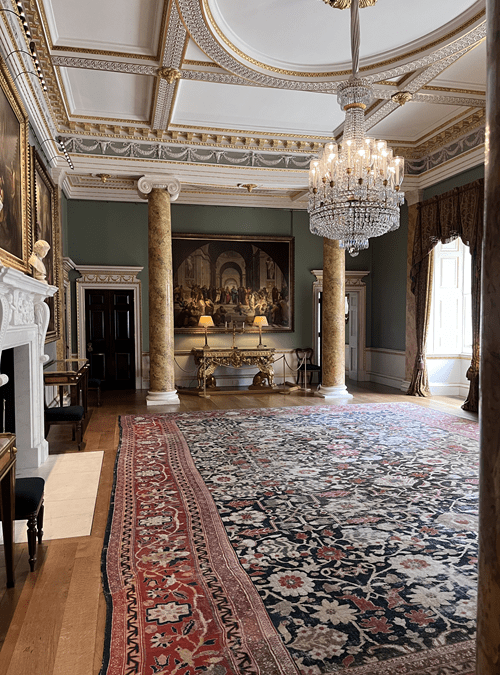
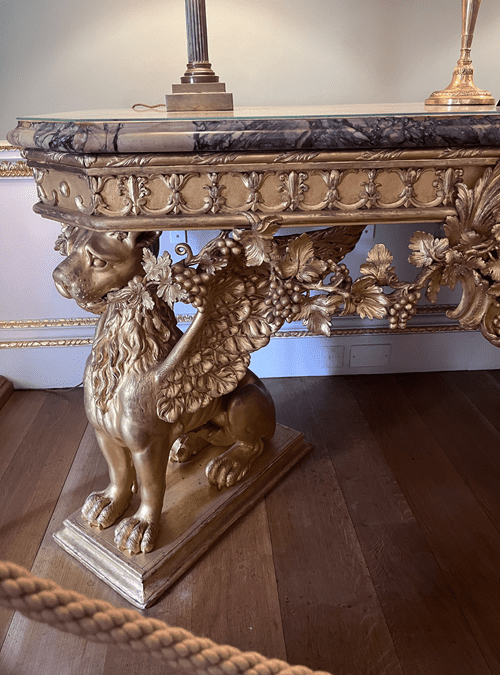
The Dining Room
Though unfurnished with a table at the time of my visit, the Dining Room radiated warmth and grandeur. Rich gold mohair cut-velvet curtains designed by David Mlinaric frame the space, complementing gilt furniture and a grand chandelier. Vardy’s ceiling design survives here, based on Inigo Jones’s Banqueting House, with decorative motifs of ox skulls and putti also seen at Holkham Hall. At either end stand original carved giltwood console tables by John Vardy, on loan from the V&A and Temple Newsam, their Bacchic imagery underscoring the theme of feasting and celebration.
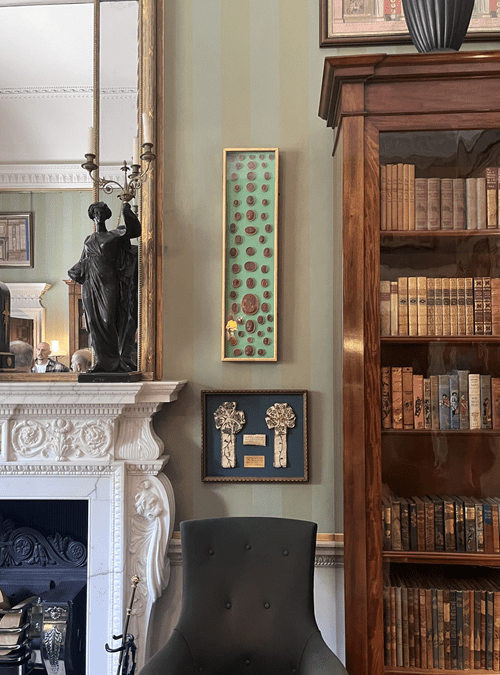
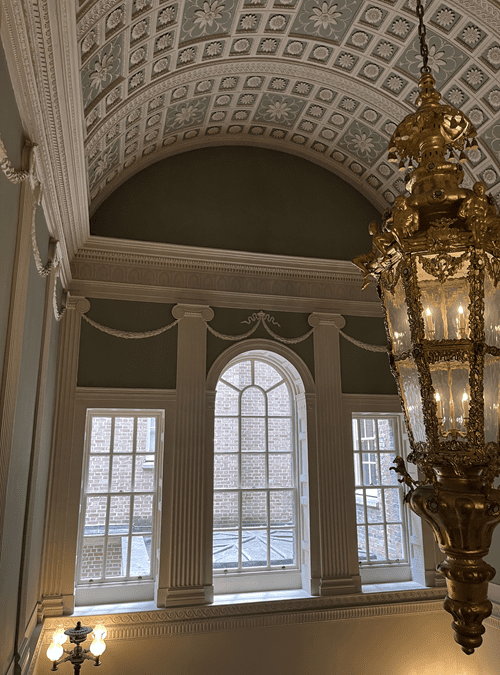
The Library
Originally intended as a drawing room, the space was later furnished as a library by Henry Holland in the late 18th century. As part of its restoration, David Mlinaric chose a specially printed blue-green wallpaper informed by historic paint scrapings, paired with Regency-style curtains after Thomas Hope. Objects on display, such as Louisa Poyntz’s decorative silk taffeta sword knots, gave the room a lived-in atmosphere.
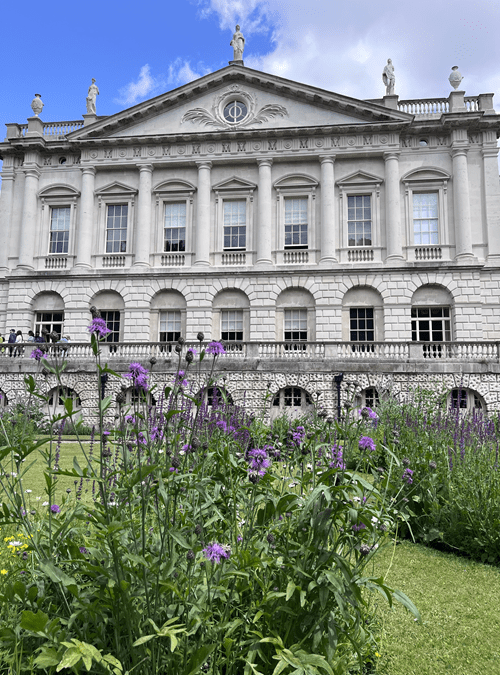
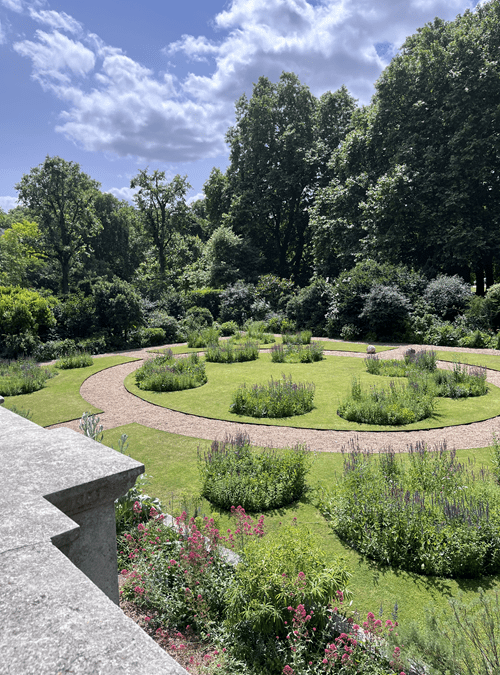
Reflections
Visiting Spencer House was a remarkable opportunity to see so many of Humphries Weaving’s fabrics in their historic settings, from the show-stopping Great Room to the detail in the Painted Room. The project reflects not only the grandeur of 18th-century design but also the enduring role of bespoke weaving in restoring and maintaining Britain’s cultural heritage. It was a true pleasure for Sarah to visit, and she hopes others will continue to enjoy visiting this splendid example of Neoclassical interiors.
